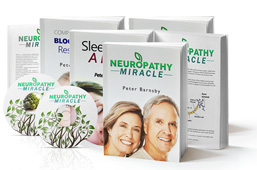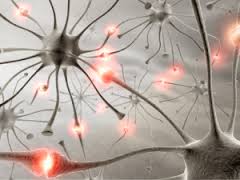Ulnar Neuropathy Sane Treatment of a Crazy Bone
Do you remember what it felt like when you banged your elbow on a hard surface and it sent shocks through your forearm and into your little finger? Not too pleasant, to be sure. But on the plus side, the unpleasantness was merely temporary and, for the time being, you remembered not to do that again.
The part of the nervous system responsible for this annoying symptom is the ulnar nerve, a peripheral nerve-bundle whose individual nerve-fibers originate in the spinal cord where it passes through the neck. The nerve-fibers run most of the length of the arm, including through the “ulnar groove” which you may know as the “funny bone” or “crazy bone.”
Some people experience a more persisting impairment of the ulnar nerve called ulnar neuropathy. With “-pathy” as the medical suffix meaning illness or impairment, an “ulnar neuropathy” means an illness or impairment of the ulnar nerve. The ulnar nerve is vulnerable to injury or pinch in the ulnar groove for more than one reason.
First, instead of being surrounded by soft, cushioning muscles and tendons, it is sandwiched between a layer of skin on its exterior surface and nothing but hard bone on its interior surface.
Second, when the elbow bends, the ulnar nerve stretches because it has to take the long way around the elbow.
Like a telephone cable containing numerous wires, the ulnar nerve-bundle contains many individual nerve-fibers, some of which tell the muscles what to do and others of which carry messages back to the spinal cord and brain about sensations experienced by the skin and other tissues. So when the ulnar nerve is injured, both motor and sensory symptoms are possible. Most of the muscles of the hand receive their marching orders via the ulnar nerve, so when the ulnar nerve is out of whack, there can be weakness in hand muscles.
The muscles that spread the fingers and those that straighten the middle joints of the ring and little fingers are often affected. Damage to the ulnar nerve also causes changes in sensation. The ring and little fingers can become numb, and so can the heel of the hand.
The ulnar nerve can come to harm in more than one way. For some people the problem might result from leaning on their elbows too much. This can compress the ulnar nerve within the ulnar groove. Granted, many people lean on their elbows without damaging their ulnar nerves, but like most things in medicine, an ulnar neuropathy is usually caused by a combination of factors, and it is likely that some people are more vulnerable than others based on their particular anatomies. Of course, rearranging one’s anatomy, as for example from a preceding elbow fracture, may also put one at risk for an ulnar neuropathy.
Another way to injure the ulnar nerve is by over-stretching it.
In the author’s clinical practice a thin, young lady with loose elbow-joints who worked as an emergency medical technician injured her ulnar nerves repeatedly while lifting heavy patients. For her, it was a problem that wouldn’t go away, and she eventually changed professions.
Although, as discussed, the ulnar nerve at the elbow is especially vulnerable to injuries, it can also come to harm by getting compressed or pinched by nearby abnormal tissues. The usual culprits are tendons, ligaments, blood vessels, cysts and scars.
Sometimes, an ulnar neuropathy is the leading symptom of a “polyneuropathy,” meaning that all the peripheral nerves in the body are somewhat impaired, but the ulnar nerve is the first one to cause symptoms noticeable to the affected individual. Polyneuropathy is not the result of injury, but can be seen in a variety of illnesses, including diabetes, alcoholism and also on an inherited basis.
Diagnosing an ulnar neuropathy starts with the story of the symptoms and a physician’s examination.
The physician might subsequently order nerve conduction testing which looks at the nerve and muscle electricity, and can determine the degree of impairment. Moreover, nerve conduction studies can also evaluate other nerves to see if the ulnar nerve is the only one impaired, or merely one of many.
What if a simple injury to the ulnar nerve at the elbow is diagnosed? What can be expected? Fortunately, the peripheral nerves have some capacity to heal themselves. So if the degree of nerve impairment is not too severe, conservative treatment is called for.
Unfortunately, there are no conservative treatments that have been studied by good, randomized, controlled trials, a form of evaluation in which the outcome of a treated group of patients is compared to that of an untreated group. Randomized, controlled trials are the gold standard for deciding whether or not a treatment is effective, so in this case all we have to go on is “clinical judgment” and observation.
A typical conservative treatment consists of putting a sport-pad (not a medical brace) on the elbow with the foam covering the ulnar groove. This accomplishes two things. First, if the elbow gets leaned on, then the nerve is still protected. Second, a well-fitting pad also prevents excessive elbow-bending (including during sleep) that overstretches the nerve and re-injures it.
In addition, eating nutritious, well-rounded meals, together with vitamins, gives the ulnar nerve the building-blocks it needs in order to make the best possible recovery.
If the nerve injury is severe, or fails to respond to conservative treatment, then surgery might be beneficial. When the nerve is tied up in scar tissue or compressed by nearby abnormal tissues, a simple release operation might suffice in which the nerve is freed up. Otherwise, in a procedure called “anterior transposition” the nerve is transferred out of the ulnar groove so it is out of harm’s way from leaning on the elbow, and also gets to take to the short way around when the elbow is flexed.
Neurosurgical researchers at Radboud University Nijmegen in The Netherlands conducted a randomized, controlled trial of patients with ulnar neuropathy at the elbow in which half the patients received simple release surgery and the other half received anterior transposition.
In this study there was no difference in outcomes between the two surgeries. About two-thirds of the patients in each group obtained an outcome that was considered either excellent or good. However, there were more complications in the patients receiving the anterior transposition procedure, so the results of this study favored the simple release approach.

